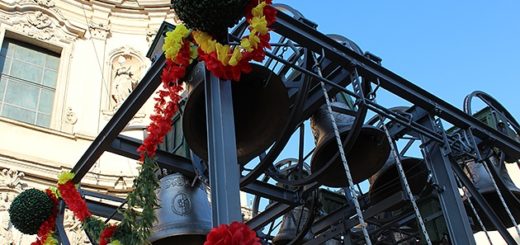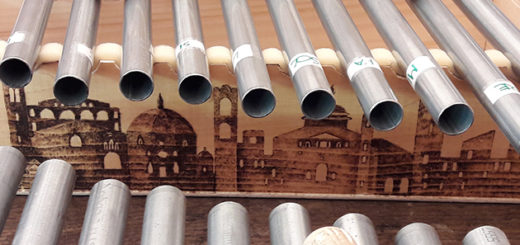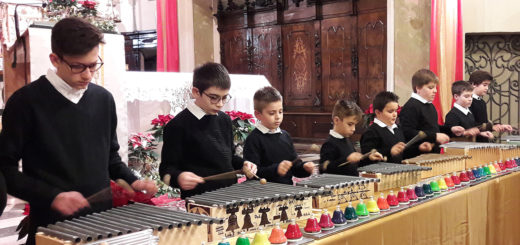‘Pastorale della Stella – Holy Star Pastoral’. A Christmas Music Virtual CD.
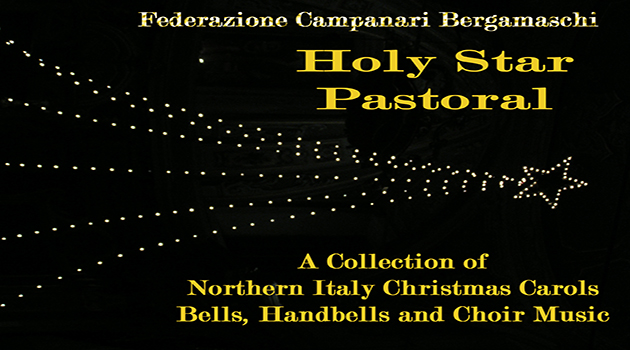
Pastorale della Stella (Holy Star Pastoral). A Christmas music virtual CD. 20 tracks. Free download. No subscription required.
Click on each track and the end of the digital booklet to listen to each song separately.
Click on this link to listen to the 66 minute one-track CD.
Pastorale della Stella (Holy Star Pastoral) is a virtual CD. It is a downloadable for free collection of 20 Christmas tunes and songs produced by Federazione Campanari Bergamaschi (Bergamo Ringers’ Association – Lombardy-Italy). The idea came a few months ago to pay thanks to doctors, nurses, home carers and health staff workers for the incredible job they have been doing since the beginning of the Covid-19 pandemic. Music cannot heal the world, but it can bring moral support to those of us who are enduring tough times. This link contains a digital booklet with a fully detailed list of the tracks that can be played separately or as a one-track CD.
Please share this CD with anyone who feels involved in this project. This is not a fundraising plan. It is simply meant to morally help people affected by serious illness and support those who are aiding them to recover.
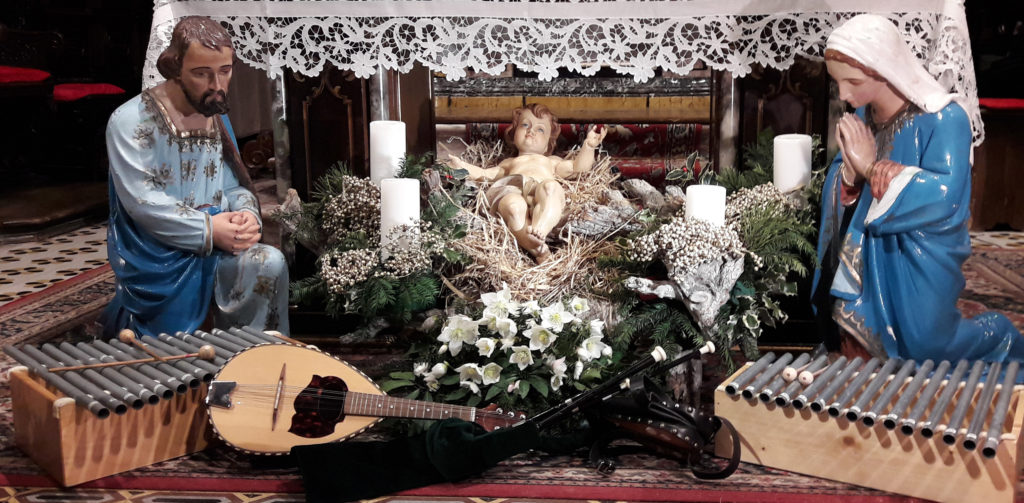
Pastorale della Stella (Holy Star Pastoral) is a 20 track virtual CD collection of Christmas songs, pastorals and tunes performed on the campanine, a folk xylophone made of a series of brass or glass bars and metal tubes which are struck with small wooden hammers to imitate the sound of bells. This local instrument has been back in use since 2000, after a long time of oblivion following a period of decline during which many old ringers gave up going to towers due to the automation of bells. Until the later part of the 20th century, the campanine was used to practice carillon tunes that were performed in the ringing chamber for religious festivals. From 2000 on, though, the campanine has become an instrument played in concerts by young pupils and master ringers in order to involve more and more people in the project of reviving an oral heritage dating from the beginning of the 18th century.
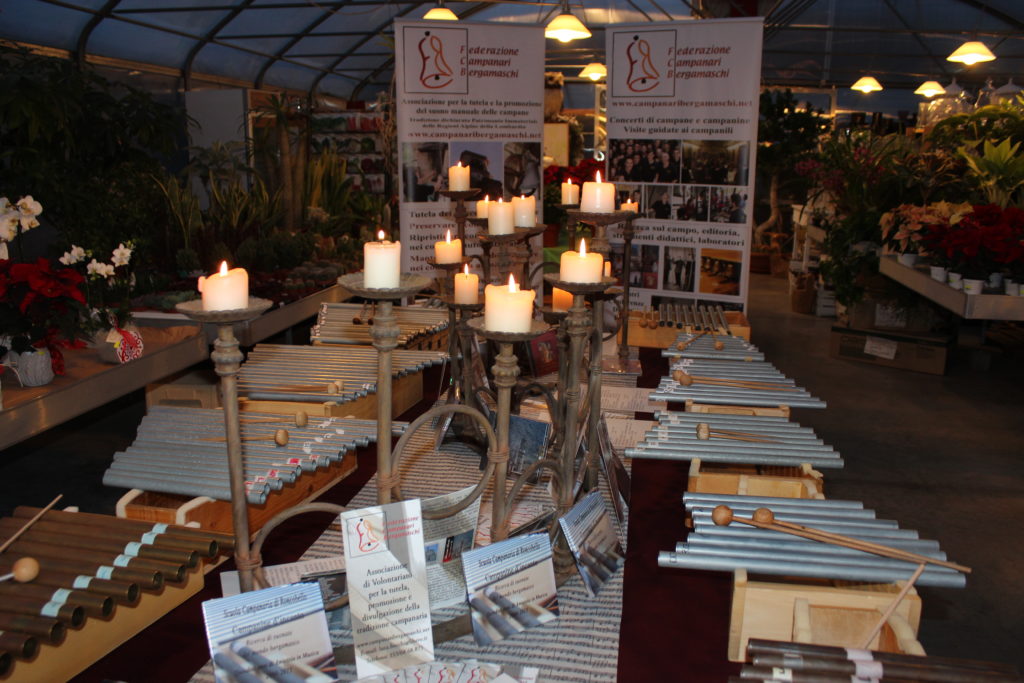
Thanks to the foundation of the ringing schools, about one hundred traditional sonatas coming from the local repertoires of the valleys and the plains around Bergamo have been retrieved from old ringers’ memory to be taught to young people. During this project, the Internet has proved to be a wonderful tool for sharing music and perpetuating a purely oral archive of old marches, polkas, waltzes and more dancing music along with a small number of church hymns. Today any ringer can learn carillon sonatas by means of scores, tutorial videos or audio files that reproduce the original version recorded while videoing ringers born at the beginning of the 20th century.
One of the cornerstones of this album is pastorals, a musical genre that was originally intended to evoke rural life. In Ancient Rome and Greece the term pastoral was intended to mean the tranquillity of country life, in contrast with the political and social turmoil in the metropolis: a sort of prophetic view of the modern world, where rediscovering local traditions can help to tackle the devastating phenomenon of globalisation. In the Bergamo area pastorals were oral compositions performed by shepherds on their bagpipes to celebrate Christmas. After a whole year of hard work in the fields, shepherds and peasants began practising their own instruments again at the beginning of Advent. Some parts of their bagpipes would need to be restored. The bag from the previous year was generally replaced by a new one as the sheep skin could get damaged or rotten. Since neither farming nor cattling could provide much food in Winter, playing the bagpipe for Christmas in towns and big villages was regarded by shepherds as a by-activity to raise money for bringing up their children.
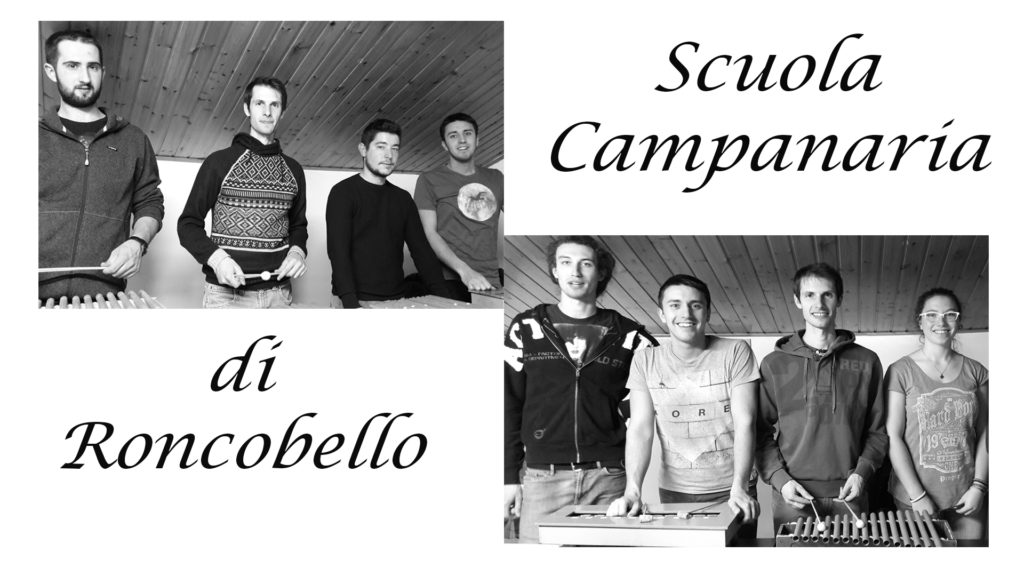
San Martino oltre la Goggia – Autumn 2017
At the beginning the shepherds living in the mountains used to make rough wind instruments out of wooden trunks. However, as time passed their primitive reeds evolved into more complex instruments with a bag to store air that was inflated into a chanter to play melodies. The local bagpipe of the Alps, known as baghèt (small bag), has been handed down from generation to generation to the present day. Bergamo researcher and musician Valter Biella has played a key role in preserving and reviving the tradition of this instrument which otherwise would be in danger of disappearing. Winter was the typical time of the year for shepherds to get back to their instrument and restore the most delicate part of it. The bag was made new as the sheep skin could break or rot and the reeds where often repaired to improve intonation. Bagpipers used to play melodies which have many elements in common, regardless of the area where they lived. The best known one was called piva, a local term that was also intended to mean the very instrument. Several church music composers from Bergamo and other areas of Northern Italy have written many pastorals that help to imagine what kind of music bagpipers really used to play on their instruments. It is very likely that church organist and composer Padre Davide da Bergamo (1791-1863) listened to the baghèt (he was organist in Gandino where old local bagpipes were found a few decades ago): one of his most interesting works that corroborates this hypothesis is La vera piva montanara ad imitazione del baghetto (The authentic piva from the mountains as an imitation of the baghèt).

Leffe – Easter Sunday 2020
Analysis of Christmas music from the Bergamo area suggests there should be a relevant parallelism between the melodies played on the baghèt and the bells. Both instruments travel through time and space, spreading a music that comes from faith through towns and villages. Several researchers have worked on the baghèt to bring back to this instrument the Christmas melodies that were and still are performed by bellringers, preserving in this way a repertoire that originally belonged to bagpipers. During the 1970s and 1980s Bergamo bagpiper maker Valter Biella collected a significant number of information about the baghèt and several pastorals rung on the bells. Our association has followed his example finding more Christmas music from the mountains and the plains, a good part of which is included in this album.
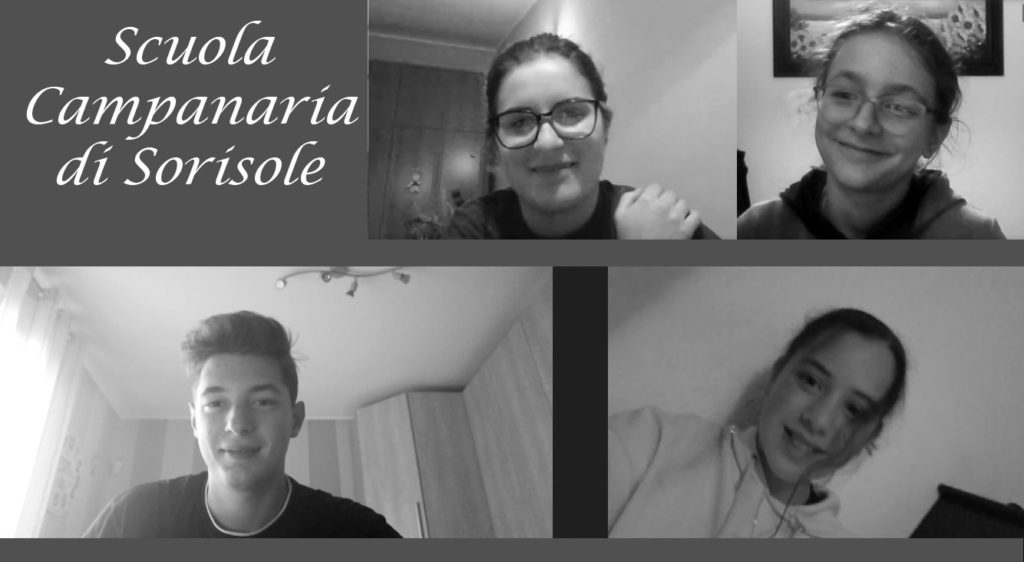
Sorisole – November 2020
In recent years our research from live recordings, old scores or tapes has confirmed the existence of interesting pastoral music in Gandino Valley (from Casnigo, Leffe and Gandino), in the Southern area of Seriana Valley (from Alzano Lombardo), in the middle of Brembana Valley (from San Giovanni Bianco and Zogno) and in the Western and Eastern plain (from Boltiere and Palosco). All the mentioned pastorals share some common elements which make the essence of this musical genre as to themes, sequence and rythms. The complexity and variety of pastorals come from their being a sequence of short and rythmically different fragments that are joined together. Pastorals usually contain a main theme that generally develops into a court dance in fast 3/4 or 6/8 time, followed by a solemn adagio in 2/4 time or 3/4, and a lively finale in 6/8.

A Google Meet session – November 2020
This CD contains not only local Christmas music but also a good number of tunes from the European tradition, notably from Great Britain. Since 2008 UK ringers have regularly visited Bergamo towers on their European tours and have acquired a pretty sound knowledge of Bergamo ringing system. In turn, our ringers have had the opportunity of knowing the art of handbell ringing and most of the English Christmas tunes, which were later adapted for the campanine. Handbell ringing is an excellent example of team work as unlike Bergamo campanine ringers each player is supposed to be ringing one to three handbells following a score with a variety of markings and notations. Interestingly enough, a handbell team usually plays according to archetypal shapes (i.e. a circular set of six or more players or even cardinal points), something which has an interesting relationship with the old group dances (e.g. monferrina) before the advent of waltzes, polkas and mazurkas (in closed position).
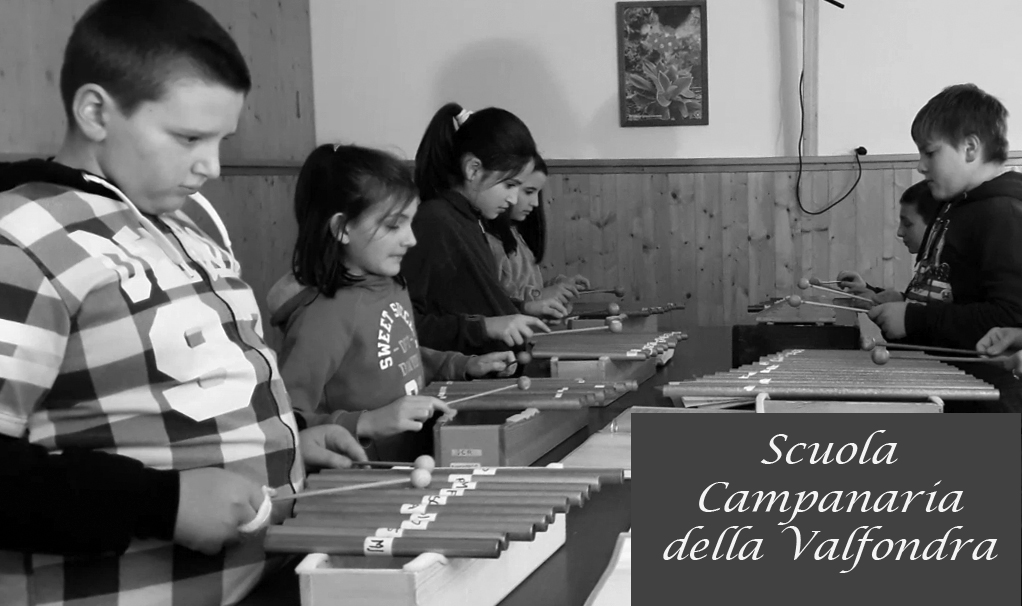
Fondra (Isola di Fondra) – Autumn 2018
It is generally recognised that the English and American repertoire of Advent, Christmas and Epiphany tunes and songs is far more extensive than the Italian one. Thanks to the media, many of them have become increasingly popular in Italy in the latest years. Performing these songs in the CD is a way for us to thank our UK friends for the great opportunity we had to broaden our musical horizons in a time when the Internet was not yet such a powerful means of communication as it is today.
The second part of this CD features a six track Christmas song collection according to the European tradition (Northern Italy, French and Anglo-Saxon music repertoire). All the songs have been performed by Voci della Scuola Campanaria, a five-member home choir performing for service. All the voices have been recorded separately and then have been mixed together by the help of digital audio workstation Adobe Audition. All the singers devote their spare time to ringing, playing instruments and taking an active part in charities or local parishes.
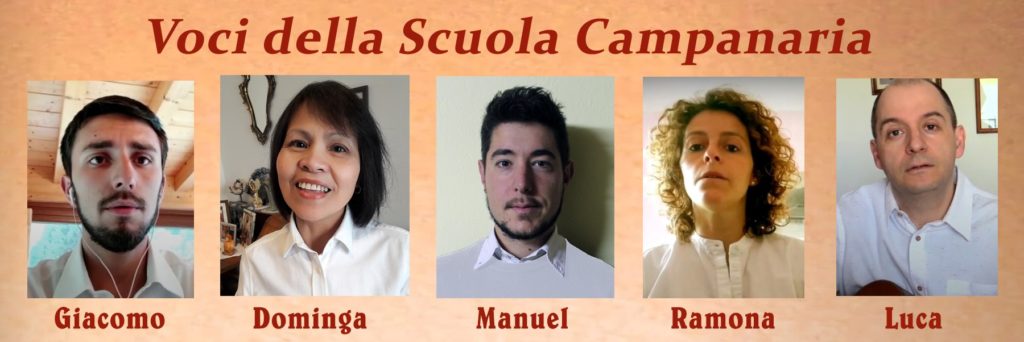
CD TRACK LIST
01. Pastorale della Stella. Holy Star Pastoral. Christmas tune composed by Luca Fiocchi. It was inspired by the image of the typical iron framed stars which people living in the Alps are used to forging and hanging forge and hang on balconies to welcome the arrival of the Holy Night.
02. Noel. It is a song of Cornish origin which was first published in Carols Ancient and Modern (1823) and in Gilbert and Sandys Carols (1833).
03. Pastorale della Bergamasca. Bergamasque dance Pastoral. It is a popular Christmas tune proceeding from a Middle Age court dance, that was played later by bagpipers to announce Jesus’ coming. There follows Angels from the Realms of Glory.
04. Joy to the World. It is a popular Christmas carol by the English writer Isaac Watts (1674–1748), who adapted Psalm 98. The melody seems to have been inspired by German composer Georg Friedrich Händel’s Messiah (1685–1759). It was then arranged by Lowell Mason (1792–1872) in 1836.
05. In notte placida. On a Calm Night. This song was written by French composer François Couperin (1668 –1733). It was probably inspired by a pre existing local pastoral tune.
06. Tu scendi dalle stelle. From Starry Skies Descending. An Italian Christmas carol composed in 1754 by Saint Alfonso Maria de’ Liguori from Naples.
07. Piva. As said in the introduction, it is a Medieval court dance that later turned into a popular melody played by bagpipers to celebrate Christmas.
08. Pastorale di Palosco. Palosco Pastoral. It is still performed by local ringer Stefano Testi (born 1947). He learnt it from Macetti family’s ringers, who paid service in the local tower from the beginning of the 20th century.
09. Pastorale di Boltiere. A complete reconstruction of it has been possible through local ringer Alfonso Agazzi and a handwritten score of it handwritten by local marching band member Giuseppe Pilenga in about 1960. The score was then carried to Brasil, where Mr. Agazzi went to live after World War II.
10. Pastorale di Roncobello. Roncobello Pastoral. A traditional tune from Roncobello repertoire performed on campanine. It was composed by Luca Fiocchi.
11. Pastorella di Leffe. Leffe Pastoral. It was recorded in an interview with local ringer Tarcisio Beltrami (born 1922). It was firstly performed in about 1850 by the members of the Pezzoli family, whose surname was pedrècc. They were the official ringers in the village from 1796 until 1946.
12. Pastorale di Sorisole. Sorisole Pastoral. This is the original version recorded by Mr. Giuseppe Stecchetti to his father Clemente in 1971. It was recorded on a c90 audio tape and preserved by the family through the years. Clemente was a member of the local church choir, a marching band player and the most brilliant local bell-ringer in the 20th century.
13. We Three Kings. It is a Christmas carol written by John Henry Hopkins Jr. for a Christmas pageant that took place at the General Theological Seminary in New York City in 1857.
14. Jingle Bells. It was originally written by James Pierpoint in 1857 to be sung by a Sunday school choir in Boston. Originally intended for Thanksgiving Day, it became the emblem of Christmas.
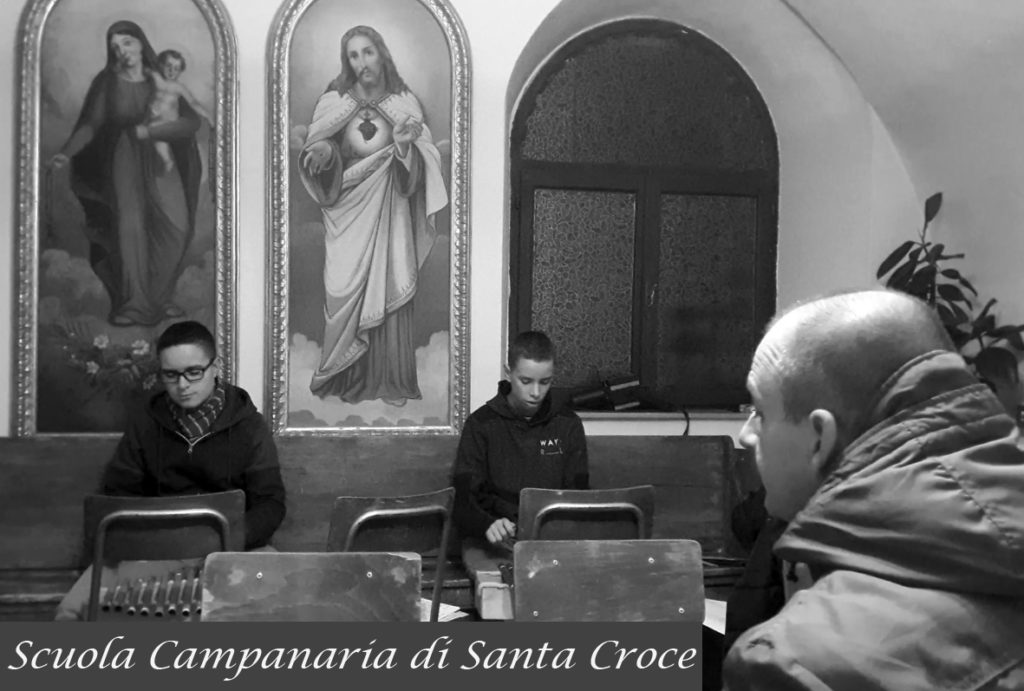
Santa Croce (San Pellegrino Terme) –Autumn 2018
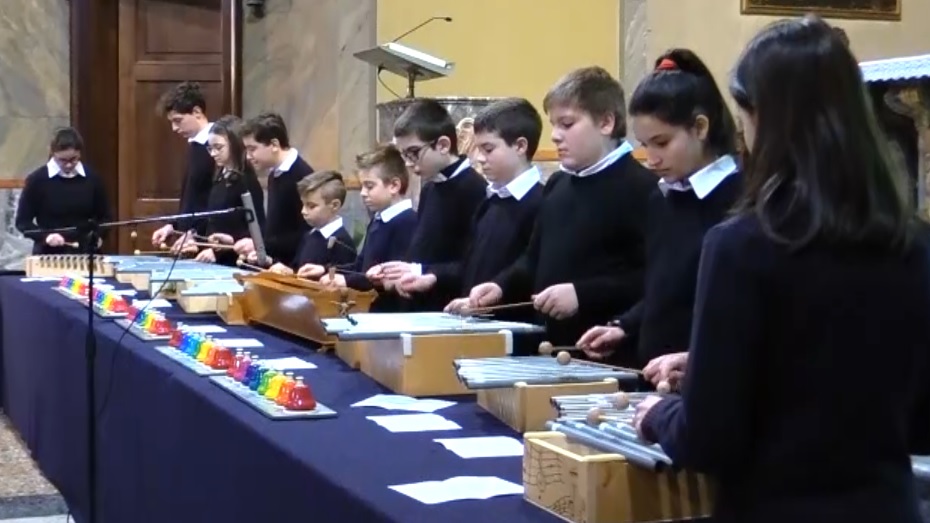
Jingle Bells – Scuola Campanaria della Federazione – FCB Young Bell-Ringers in Concert. Comenduno. 15th December 2019.
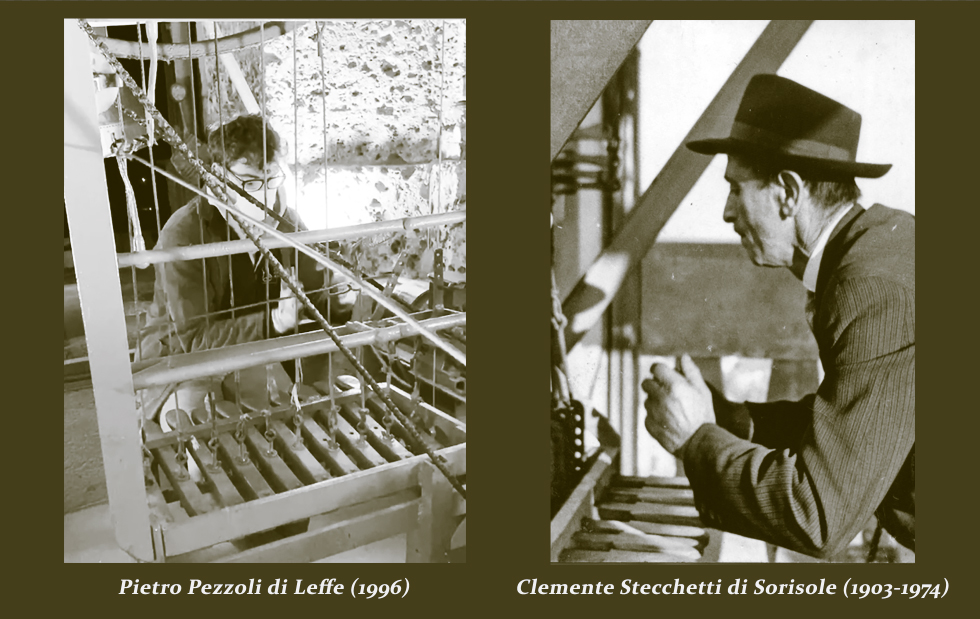
Voci della Scuola Campanaria. Christmas Carols.
15. Viaggio a Betlemme. (On the Way to Bethlehem). A rearranged version of an old carol from Piedmont region that was recorded in the 90’s by Ensemble del Doppio Bordone, a great folk music band from Alessandria. The song tells about the story of Mary and Joseph looking for an inn to spend the night in Bethlehem as the Romans called for a census.
16. Gesù Bambin l’è nato. (Jesus was born in Poverty). It is a carol from Lombardy region. It was recorded in the 90’s by Ensemble del Doppio Bordone, a great folk music band from Alessandria. The song tells about Jesus’ humble birth. The shepherds and the Three Kings come to adore him sleeping in the crib.
17. Astro del ciel. Silent Night. It is a popular Christmas carol composed in 1818 by Franz Xaver Gruber. The lyrics by Joseph Mohr were written in 1816.
18. Lullaby. Wiegenlied op. 49 n° 4 composed by Johannes Brahms in 1868.
19. I tre re. This is an Italian version of a famous Christmas carol about the Three Kings on their way to Bethlehem. This melody comes from Valle Sabbia, which is a mountain area north of Brescia town. According to the local tradition, on the Eve of the 6th January several groups of folk singers wearing rough black garments wander through the villages to announce the arrival of the Three Kings. Each group carries a huge cardboard star fixed to a long pole to lead people in procession. This version comes from the village of Bione. It was recorded by music researcher Aurelio Citelli and then published by Associazione Culturale Barabàn in the CD titled Noi siamo i tre.
20. Santa Lucia Bella. (Hymn On Saint Lucy’s Day). It is a popular song about Saint Lucy visiting in the night to carry children gifts. This is traditionally believed to occur in many European areas on the Eve of 13th December. We recorded this version from bell-ringer Giulio Donadoni (1930-2011), who learnt it while attending kindergarten in 1935. This track was recorded by Coro della Scuola Campanaria di Roncobello on the 27th December 2003.
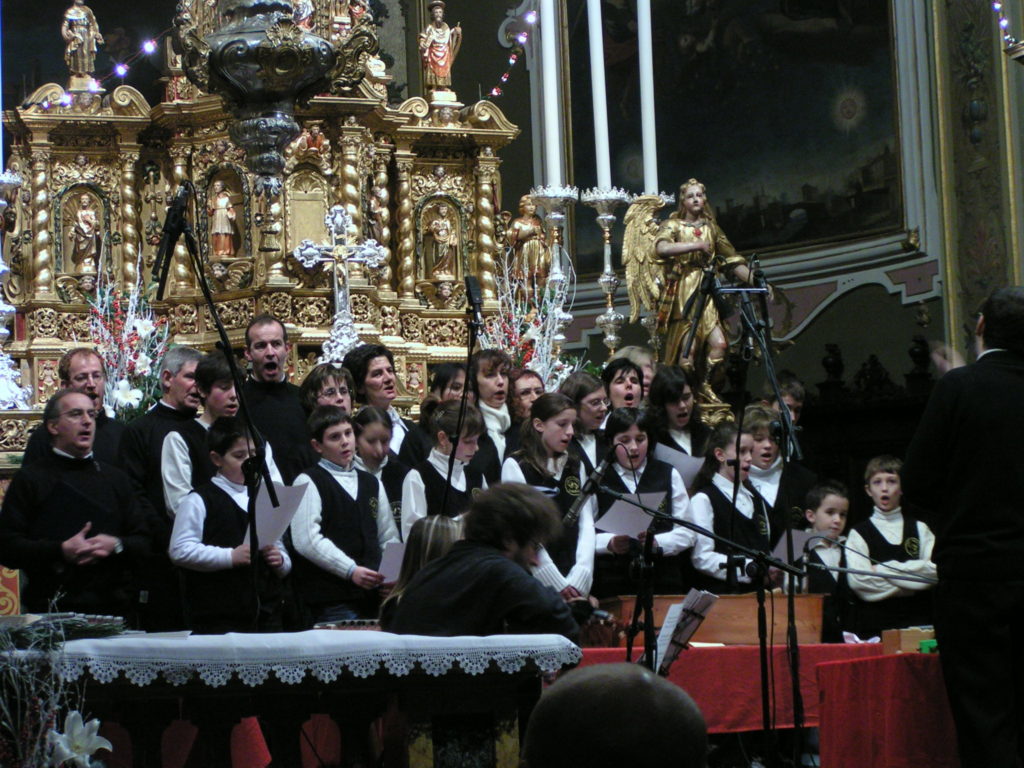
Santa Lucia Bella – Coro della Scuola Campanaria di Roncobello. 27 dicembre

